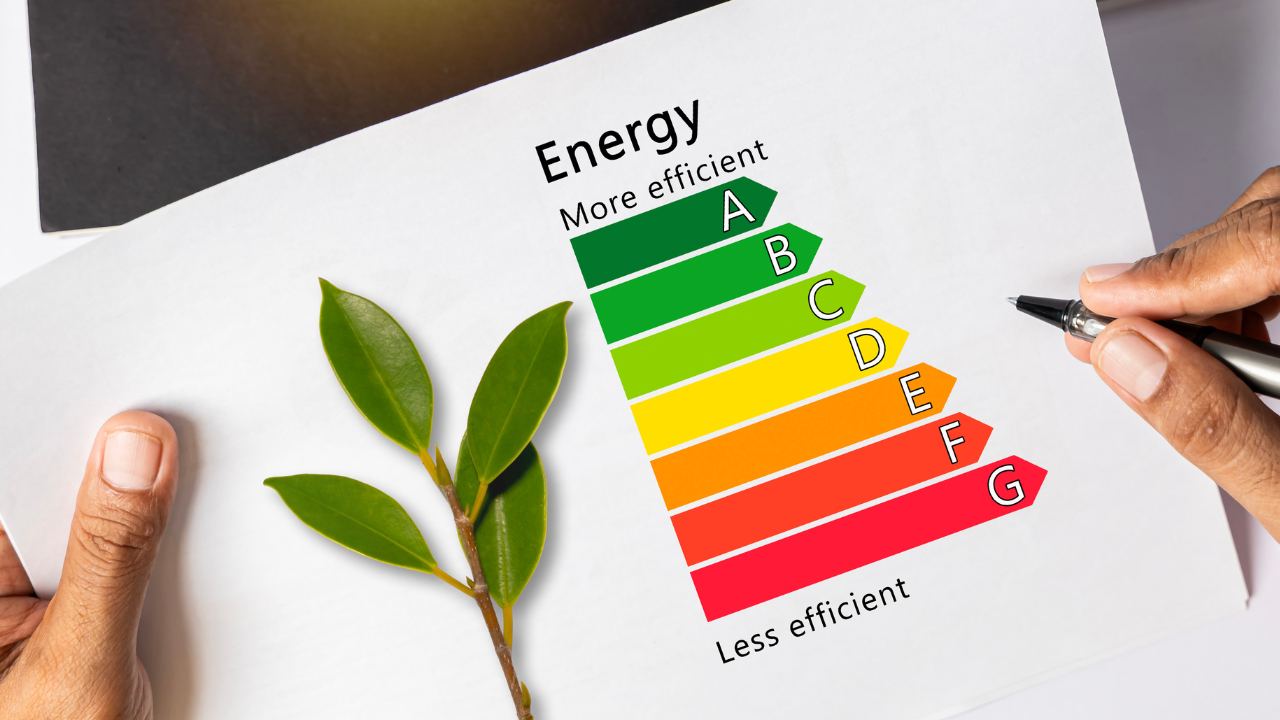Energy costs are an ongoing concern for businesses, as they directly impact both profitability and competitiveness.
Energy management has emerged as a critical strategy for small, medium, and large businesses seeking to reduce costs, optimize energy consumption, and embrace sustainability.
In this blog, we will discuss what energy management is, what it can do for your business, and the key strategies for businesses to optimize energy use and reduce their environmental impact.
What is Energy Management?
Energy management refers to the systematic process of planning, controlling, and monitoring energy consumption.
What’s the goal? Optimization and reduction in environmental impact.
Energy management software is a game changer because it collects and analyzes energy data to provide useful insights for making informed decisions.
This comprehensive process identifies sources of energy waste, implements reduction strategies, and monitors progress toward established targets.
The Benefits of Energy Management
- Cost Savings: Lowering energy consumption directly results in lower utility bills and operational costs. Energy management enables businesses to identify and address inefficiencies, resulting in significant financial benefits.
- Environmental Sustainability: Sustainable energy management shows a company’s commitment to environmental responsibility, which improves its brand image. Businesses can reduce their energy use, lower greenhouse gas emissions, and have a smaller carbon footprint.
- Enhanced Operational Efficiency: Efficient energy use can boost operational performance and productivity. For example, optimizing HVAC systems can result in a more comfortable work environment, potentially increasing employee productivity.
- Regulatory Compliance: Effective energy management practices help businesses meet SLA compliance while avoiding potential fines or penalties.
Industries That Reap the Benefits of Energy Management
Energy management is not a one-size-fits-all approach. However, a surprising number of industries can benefit greatly from adopting these practices. Let’s look at some key sectors:
- Agricultural: Energy management can help agricultural professionals optimize irrigation systems, greenhouse operations, and equipment usage. This can result in lower costs, increased resource efficiency, and a more sustainable approach to farming.
- Commercial Buildings: Office buildings, retail spaces, and hospitality establishments can use energy management software to remotely monitor and manage energy consumption. Smart HVAC, lighting, and appliance controls have the potential to reduce energy consumption significantly.
- Data Centers: Data centers, the backbone of the digital age, use a lot of energy. Energy management improves cooling systems, server efficiency, and power distribution, resulting in significant cost savings.
- Educational Institutions: Schools and universities can benefit from energy management across multiple facilities. Optimizing lighting, ventilation, and equipment use can save costs and create a more environmentally friendly learning environment.
- Government and Public Facilities: Energy management can benefit government buildings, libraries, and public spaces alike. This translates into cost savings for taxpayers and a dedication to environmental stewardship.
- Healthcare: Hospitals and healthcare facilities require a lot of energy to run critical equipment and provide patient care. Energy management strategies can improve energy efficiency in these facilities while also ensuring patient comfort and safety.
- Hospitality: Hotels, resorts, and restaurants can benefit from energy management by optimizing energy consumption in guest rooms, kitchens, and common areas. This leads to cost savings and a more environmentally friendly approach to hospitality.
- Industrial facilities: Industrial facilities can use energy management to reduce energy consumption and increase safety. Optimizing equipment operation, lighting, and ventilation can result in cost savings and a safer working environment.
- Manufacturing: Manufacturing facilities frequently have high energy requirements due to machinery and processes. Energy management improves equipment operation, lighting, and ventilation, resulting in significant cost savings.
- Retail: Retail businesses can use energy management to optimize their lighting, heating, and cooling systems, resulting in lower energy costs and a more comfortable shopping experience for customers.
- Transportation: Energy management solutions can help businesses with vehicle fleets save money and reduce their environmental impact by optimizing fleet operations and monitoring fuel consumption.
- Utilities: Energy management software can be an invaluable resource for utility companies. It helps to monitor and optimize energy generation, distribution, and grid management, resulting in increased efficiency and reliability.
Businesses in a variety of industries can benefit significantly financially and environmentally from implementing effective energy management practices. This lays the groundwork for a more sustainable future for everyone.
Key Components of a Successful Energy Management Program
Building a strong energy management program requires several key ingredients:
- Energy Audits: Energy audits comprehensively evaluate a facility’s energy consumption. They include a site survey, data collection, and analysis of energy consumption patterns. It identifies where energy is being uncaptured or wasted. Common steps include reviewing utility bills, analyzing energy meter data, and performing on-site equipment and process inspections.
- Setting SMART Goals: Once an energy audit identifies areas for improvement, it is critical to set specific and measurable energy-saving goals. These objectives should be SMART (specific, measurable, attainable, relevant, and time-bound). Setting clear goals helps to direct and focus your energy management efforts.
- Use Energy-Efficient Appliances and Equipment: Upgrading energy-efficient equipment, optimizing building management systems, and encouraging energy-saving employee behavior are all effective strategies. Furthermore, using renewable energy sources such as solar power can significantly reduce reliance on conventional energy sources.
- Monitoring and Analysis: Regular monitoring of energy consumption is required to track progress toward goals and identify areas for improvement. Energy management software is your secret weapon for gathering and analyzing energy data from various sources. Data analytics tools built into the software can detect trends, patterns, and anomalies in energy consumption, providing valuable insights for optimization strategies.
- Engaging Employees: Employees play an important role in effective energy management. Educating and engaging them in energy-efficient practices has a significant impact on energy consumption. This could include training employees on energy-saving behaviors, encouraging participation in energy-saving initiatives, and promoting a sustainable organizational culture.
- Continuous Improvement: Energy management is not a one-time solution. It’s an ongoing process that necessitates regular monitoring, evaluation, and improvement. Regularly review your strategies, adapt to changing circumstances such as new technologies or business expansion, and strive for continuous improvement in energy efficiency.
Implementing these key components can help businesses build a strong energy management system, which will result in significant cost savings, environmental benefits, and operational improvements.
How Can SalTec’s Energy Management Solution Help?
SalTec provides a comprehensive suite of Energy Management Solutions (EMS) that enable businesses of all sizes to gain control of their energy consumption. Our suite includes a variety of tools and features to meet a wide range of needs:
- Real-Time Data Monitoring and Visualization: Get real-time insights into your energy usage across multiple facilities or equipment. Our user-friendly dashboards provide clear and concise visuals, allowing you to identify high-consumption areas and potential inefficiencies.
- Automated Energy-Saving Measures: SalTec’s EMS is compatible with building management systems and equipment controls. This allows for automated adjustments, such as optimizing lighting based on occupancy or adjusting HVAC settings based on weather conditions, resulting in automatic energy savings.
- Customizable Reporting and Analytics: Our EMS extends beyond basic data collection. We offer customizable reports and detailed analytics to help you understand energy consumption patterns, track progress toward goals, and identify opportunities for further optimization.
We invite you to explore our interactive demo and see how it can help you manage your energy consumption and embrace a more sustainable future.
Conclusion
Energy management is no longer a nicety; it is a necessary business strategy. Businesses implementing effective energy management practices can achieve significant cost savings, reduce their environmental impact, and improve operational efficiency.
This comprehensive guide has looked at the key components of a successful energy management program and highlighted the benefits for various industries.
Businesses should seriously consider implementing energy management solutions to increase efficiency, lower costs, and contribute to a greener future. Remember that even small changes today can have a significant positive impact on our environment and planet.



